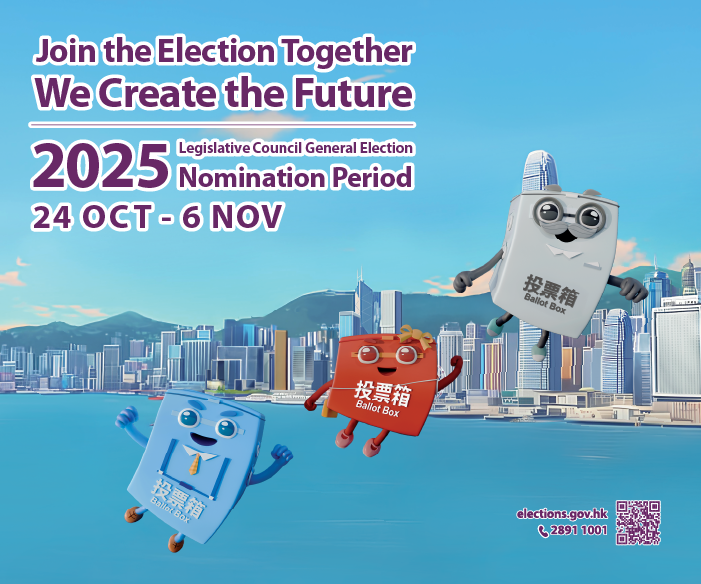Days after the China-US trade talks in Geneva, it emerged that from January through April, US enterprises formed the second-biggest group, after those from the Chinese mainland, to have set up base or expanded in Hong Kong.
 On Wednesday, Hong Kong’s undersecretary for commerce and economic development, Bernard Chan Pak-li, said in the Legislative Council that Invest Hong Kong — the government agency responsible for steering external investment into the city — assisted 223 mainland and overseas enterprises in the first four months of 2025, representing a year-on-year increase of 13 percent.
On Wednesday, Hong Kong’s undersecretary for commerce and economic development, Bernard Chan Pak-li, said in the Legislative Council that Invest Hong Kong — the government agency responsible for steering external investment into the city — assisted 223 mainland and overseas enterprises in the first four months of 2025, representing a year-on-year increase of 13 percent.
More than a fourth of these firms “indicated they plan to set up their international or regional headquarters in Hong Kong”, Chan said. According to government estimates, the 223 enterprises could bring an infusion of HK$22.3 billion ($2.85 billion) into the economy and create more than 4,900 jobs.
This profile is not really different from the dominant trend last year as per InvestHK’s 2024 statistics. Its director-general said in January while commenting on the 2024 figures that Hong Kong remained attractive to US enterprises.
This year’s January-through-April figures revealed in LegCo on Wednesday confirm that despite pervasive foreboding about the adverse effects of trade turmoil, Hong Kong continues to remain attractive to overseas firms, no less to those from the US.
If we consider a wider picture, China’s top envoy in the US, Xie Feng, was quoted as saying recently that in 2022 alone, the revenue of US-owned enterprises in China significantly exceeded that of Chinese-owned enterprises in the US by more than $400 billion.
Certainly, there have been ramifications of tariff tensions. Hong Kong’s maritime industry, in particular, has been bracing for a severe impact. More so, as once the world’s busiest container port, Hong Kong fell out of the top-10 ranking in 2023.
A circle of friends doesn’t grow automatically. There is no formula. It starts with testing of waters. Acquaintances are slowly built. Friendship blooms only after an equal footing has been established despite differences, and after sincerity has been demonstrated as unconditional and mutual respect as absolute. That’s why Hong Kong Chief Executive John Lee Ka-chiu’s just-concluded visit to Qatar and Kuwait was more than timely
In the first week of May, it was reported that 41 percent of container capacity from Hong Kong to North America’s west coast was canceled for the week starting May 12. After the China-US trade talks, the outcome was greeted with robust enthusiasm from Hong Kong’s maritime industry leaders, experts and analysts who believe that a shipment boom is imminent to make the most of the 90-day tariff grace period agreed to in Geneva.
Coming back to InvestHK data, the top five places of origin of the enterprises it helped from January through April are the mainland, the US, Japan, the UK and Singapore. Radio Television Hong Kong quoted Chan as saying in LegCo, “We will deepen connections with our traditional markets while tapping opportunities in emerging markets ... so as to expand our ‘circle of friends’.”
With global trade uncertainties and countries around the world in a serious mood for de-risking, this could be indeed both an opportune time and a policy imperative for Hong Kong to pursue an expansion of its “circle of friends”.
Hong Kong currently has 14 overseas Economic and Trade Offices (ETOs), and together with the Hong Kong Trade Development Council and InvestHK presence worldwide, boasts offices in 68 cities around the world, with their services covering 129 countries and regions, including emerging markets.
Last month, a lawmaker’s question on the number of posts and expenditures for ETOs in Dubai, Jakarta, Bangkok and Singapore in the past three years elicited detailed response from Secretary for Commerce and Economic Development Algernon Yau Ying-wah.
It seems that while the operational expenses of the Dubai ETO rose from HK$25 million ($3.2 million) in 2022-23 to HK$33.1 million in 2024-25, for the Jakarta ETO, it actually dipped from HK$23.4 million in 2022-23 to HK$22.8 million in 2024-25. The Bangkok ETO expenditure remained unchanged in 2024-25 from 2022-23 at HK$27.2 million after slipping to HK$26.7 million in 2023-24. The Jakarta ETO did post an increase to HK$25.5 million in 2023-24 before slipping in 2024-25. As for the Singapore ETO, while expenses stood at HK$26.8 million in 2022-23, it dropped to HK$23 million in 2023-24 while climbing to HK$25.1 million in 2024-25. In each case, the number of employees remained unchanged over the years.
In fact, according to Yau’s statement, the Dubai, Bangkok, Jakarta and Singapore ETOs together account for 28 percent of the total staff strength of the 14 ETOs, and about 24 percent of their total operational expenses.
Yet when it comes to attracting investment from the aforementioned places, only Singapore features in the top five places of origin of enterprises InvestHK helped in the first four months of 2025.
This outcome is clearly not commensurate with the outlay for attracting investment from emerging markets despite the government recognizing a shift in supply chains to the Global South and countries involved in the Belt and Road Initiative, including those in the Middle East.
A circle of friends doesn’t grow automatically. There is no formula. It starts with testing of waters. Acquaintances are slowly built. Friendship blooms only after an equal footing has been established despite differences, and after sincerity has been demonstrated as unconditional and mutual respect as absolute.
That’s why Hong Kong Chief Executive John Lee Ka-chiu’s just-concluded visit to Qatar and Kuwait was more than timely.
The author, who was born in Kolkata, India, is an award-winning Hong Kong-based journalist, current affairs commentator and English fiction writer.
The views do not necessarily reflect those of China Daily.



